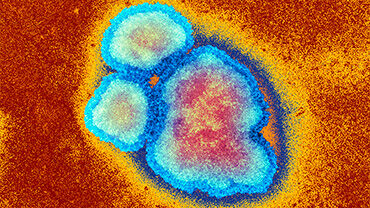Measles and rubella surveillance for 2017
The annual report on measles and rubella for 2017 is based on surveillance data retrieved from the European Surveillance System (TESSy) on 28 February 2018.
Executive summary
Measles
- In 2017, the EU/EEA experienced a resurgence of measles with several outbreaks and 37 fatalities.
- Twenty-eight EU/EEA countries reported 14 600 measles cases which translates into an overall incidence of 28.3 cases per million population. Sixty-one percent of these cases were laboratory confirmed.
- Most cases (>75%) were reported during the first half of the year with a peak in March followed by fewer cases until the end of the year. This pattern is similar to previous years.
- The highest numbers of cases were reported by Romania (5 608), Italy (5 098), Greece (967) and Germany (929). Latvia and Malta reported zero cases in 2017.
- The countries with the highest notification rates were Romania (283.8 cases per million), Greece (89.7 cases per million), Italy (84.0 cases per million) and Belgium (32.5 cases per million).
- Adults aged ≥20 years (38% of all cases) and children aged <5 years (37%) were the most affected. The highest incidences, 365.9 and 164.4 cases per million population, were observed in children aged <1 year and 1‒4 years respectively.
- The majority of cases occurred in unvaccinated individuals, and the proportion of those unvaccinated ranged from 72% in 25‒29 year-olds, to 96% in children aged <1 year, who are too young to receive the vaccination.
Rubella
- In 2017, 11 EU/EEA countries reported 696 rubella cases, which represented a marked decrease from 1 264 and 2 161 cases reported in 2016 and 2015 respectively. Seventeen countries reported zero cases in 2017.
- Poland reported 71% of all reported cases and had the highest incidence (30.1 cases per million), however, only 1% of the 469 cases were laboratory confirmed. Forty-seven percent of cases in Poland occurred in children aged <5 years.
Download

Measles and rubella surveillance - 2017 - EN - [PDF-3.05 MB]






